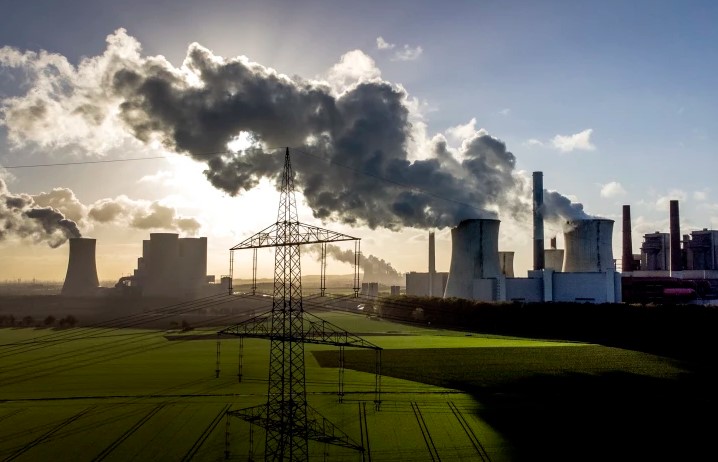by Felicity Bradstock* Many carbon offset projects fail to meet sustainability criteria, despite certification from reputable standards. Companies overstate their decarbonization achievements through ineffective offset schemes, unhindered by weak regulation. Studies demonstrate the failure of carbon offsets to reduce emissions, highlighting the need for stricter monitoring and assessment
Companies worldwide are increasingly opting to use carbon credit schemes to offset their emissions, as governments urge them to decarbonise operations. While this might seem the obvious solution for hard-to-abate industries, many are failing to monitor and assess the schemes to ensure that they are working as expected and offsetting the necessary quantity of carbon to decarbonise operations.
Carbon offsetting schemes are programmes introduced by a wide range of companies aimed at reducing carbon emissions through various projects, rather than cutting emissions at the source. They are often used by companies in hard-to-abate industries such as aviation and manufacturing. Some of these schemes include reforestation to absorb CO2 from the atmosphere, regenerative agriculture, and renewable energy projects. In recent years, there have been an increasing number of reports on the failure of carbon offsetting schemes worldwide, largely due to a lack of monitoring and assessment.
One white paper by the environmental firm Compensate demonstrated that 90 percent of the carbon offsetting projects they assessed that used nature-based solutions failed to meet their sustainability criteria. Worryingly, many of these schemes were certified by the international standards Verra or Gold Standard. This view of the widescale failure of carbon offset programmes has been reiterated by the Former Bank of England governor Mark Carney’s ‘Taskforce on Scaling Voluntary Carbon Markets’.
Some of the identified reasons for failure include the fact that emissions reductions rely on vague predictions; carbon credits can cause community conflicts; there are unreliable baseline emissions rates that inflate emissions promises; many schemes cause risks to new forests once completed and developers leave; and that many of these projects do not contribute to achieving additional climate benefits beyond carbon offsetting.
The low success rate in many carbon offset programmes around the globe means that some companies have been overstating the efficacy of their offset activities. A study from the University of Berkeley’s Goldman School of Public Policy that evaluated the methods used in offset forestry projects – which account for 11 percent of all carbon offsets ever issued – revealed that there were significant shortcomings, which resulted in the issuing of bogus carbon credits.
Many companies carry out foresting activities as a means of offsetting their carbon emissions, investing in reducing the environmental impact of logging infrastructure such as roads, waiting until trees are older to harvest them, or restricting the number of trees that can be cut per hectare. However, the researchers found that many project developers were generating credits even when no changes were made. The carbon offset market is largely unregulated, meaning that standards compliance is overseen by a few independent groups. The researchers assessed the approaches used by some of the world’s biggest registries –Verra’s Verified Carbon Standard, Winrock International’s American Carbon Registry and the Climate Action Reserve, to provide carbon credits. The team found that the methods used failed to uphold basic criteria that would ensure projects make a real difference to carbon dioxide levels in the atmosphere. The lead researcher on the project, Barbara Haya, explained, “It makes the global community think that we’re doing more than we’re really doing at this brief moment we have to dramatically reduce our emissions to prevent runaway climate change.” She added, “Offsetting is a misnomer — you can’t ‘offset’ your emissions… We need alternative ways of supporting climate mitigation because the current offset market is deeply not working.”
A similar discovery has been made in Australia by a group of 11 researchers. They found that the popular technique of “human-induced regeneration” failed to achieve the anticipated new tree cover in the outback forests between 2015 and 2022. The study assessed 182 projects in arid and semi-desert regions and found that forest cover had either barely grown or had gone backwards in nearly 80 percent of cases. This suggests that the projects in question did not reduce emissions, as promised by the companies using these offset schemes, and therefore these companies were not reducing their impact on the climate. By June 2023, over 37 million carbon credits, valued at between $750 million and $1 billion, each with the promise of removing a tonne of carbon dioxide from the atmosphere, had been issued. One of the authors, Andrew Macintosh, previously stated that these carbon offset schemes were a “sham” and a fraud on taxpayers and the environment.
While thousands of companies worldwide continue to use carbon offset schemes to support decarbonisation efforts, in line with a green transition, little is being done to ensure that the offsetting projects are achieving the anticipated results. Many companies are overstating their decarbonisation achievements, and little is being done to stop this, due to a lack of regulation in the sector. While a greater number of studies are demonstrating the failure to reduce carbon emissions through these types of projects, nothing is happening to change the way carbon offset schemes are managed to ensure that companies are actually decarbonising.
*Felicity Bradstock is a freelance writer specialising in Energy and Finance. She has a Master’s in International Development from the University of Birmingham, UK.
(by Oilprice.com, May 08, 2024)




